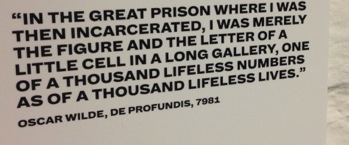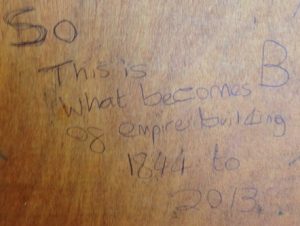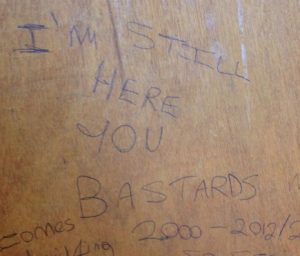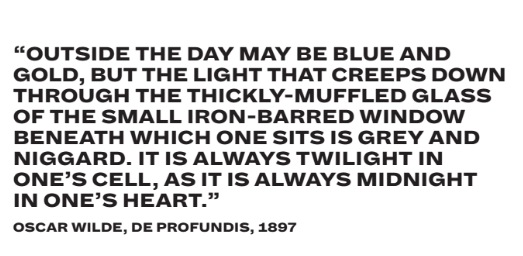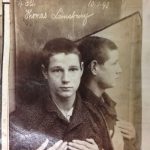Oscar Wilde’s lost years in Reading Gaol are currently brought to light by the fantastic ArtAngel project. Having connections via my prison writing programme for young men, I attempted to gain access to the prison before it closed in 2013. It wasn’t to be. Now, thanks to some very sophisticated creatives, for a short time everyone has a chance to enter the dark world where Wilde composed his last great work. I visited on Saturday, 10 September 2016.
My bag was filled with Wilde for the trip — an early copy of The Ballad of Reading Gaol, and The Decay of Lying — along with some memorabilia & notes from my correspondence & friendship a few years back with Gawain Douglas, Lord Alfred’s great-nephew (and contemporary expert on his family’s long legacy of being known as ‘The Black Douglasses’ – “The mad, bad line from which you are come”).

Back in 1999 or so, I met Oscar’s only grandson, Merlin Holland in New York City, when he launched the publication of the real trial transcripts – the first look at a more accurate account, taken by privately-hired stenographers who sat in the gallery. Holland stated that the texts, owing to possible controversy and political upheaval, had been hidden for almost a century until being dropped off anonymously at the British Museum, who in turn, contacted him.
As we drove the long road to Reading, the rain blew in waves sideways, and I wondered how on earth Wilde — trial over, sentence passed, public humiliation at its peak — survived even the long dreadful journey from London to this place of lost souls.
The main thing about Victorian justice: you are removed.
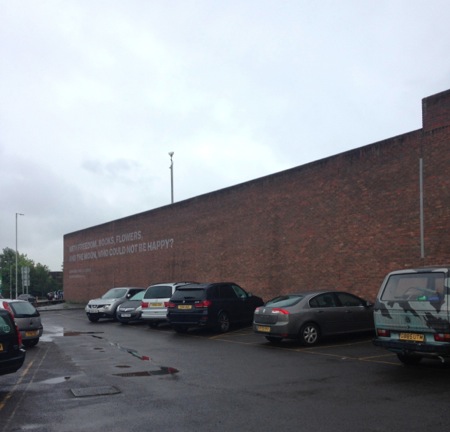
Once inside the fortified wall, the newbie makes the first-timer mistake: to study the area leading to the belly of the giant beast. In most cases, the only other time, if one is lucky enough, to see this area is after completing his sentence and earning a cautious liberation.
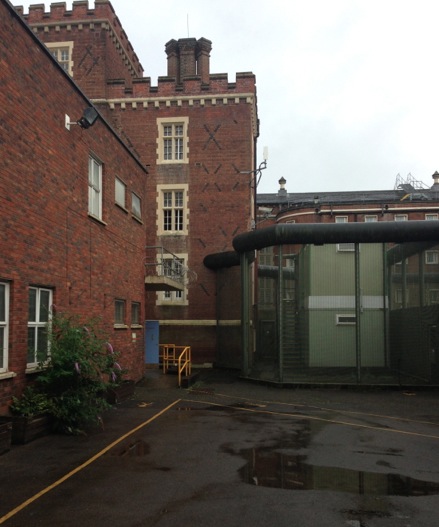
Shortly thereafter, reality sets in. The only thing missing on this visit were the eery hums, bangs and clangings — and loud exclamations from excited inmates of a working jail. Life inside is never silent.

Because the places are designed with deep designs to prevent escape, they deceive, as if something interesting or fantastic will be revealed once inside. The inner circle, the A-list, the private rooms of members-only clubs. Perhaps not deceiving at all.
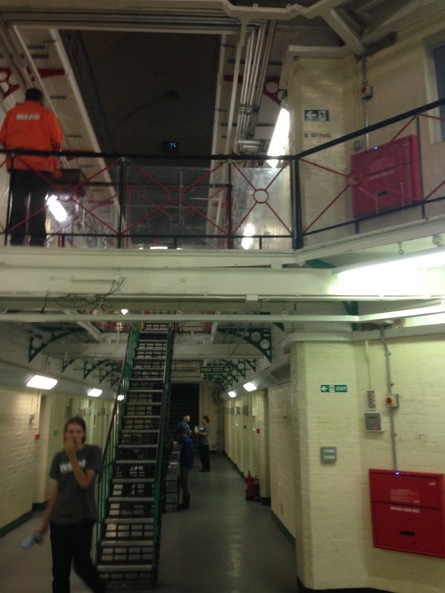
This exhibition, important (imho) for the artists like Steve McQueen, Ai Weiwei and NYC’s Nan Goldin to participate, is even more significant for the demonstration of the use of such a fantastically macabre space. We pay large sums for the ballet or opera to accomplish the nonfiction contained in these walls, and the realities of the lives that echo in the bricks and mortar.
Jonny & I took our time making our way to the infamous cell “C 3.3.3” – which, according to the plethora of ArtAngel experts on hand for our questions, after several numerical reassignments and reshuffles since 1897 (Wilde’s release), is now “C 2.2” .
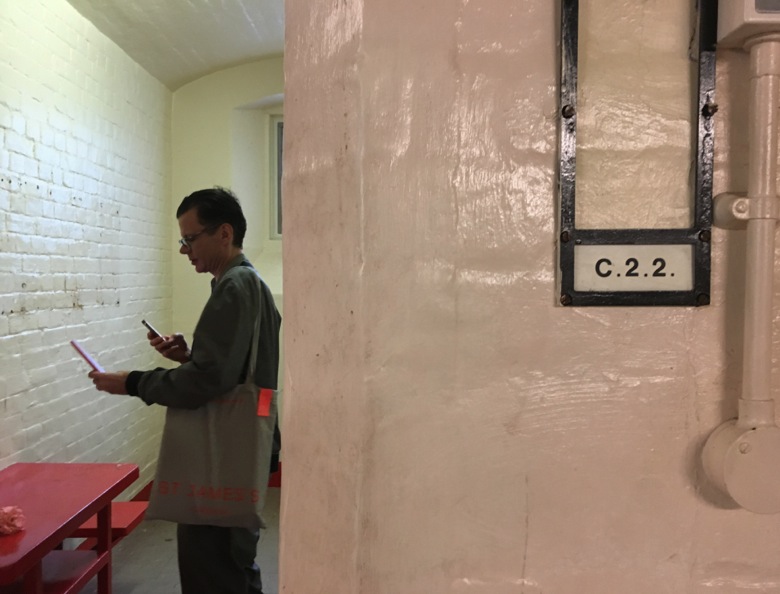
Jonathan & I, along with my dear friends Mary, Geraldine and Gaya saw the BAM NYC production of The Judas Kiss by David hare back in May. Although I’d enjoyed it very much, Wilde & Bosie’s written work, and even the poigniant Wilde references in Stoppard’s The Invention of Love, it was not until I spent a while in C.3.3.3 that I fully understood the mood of De Profundis, and what little we know of Wilde’s final years upon release.

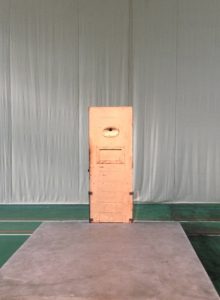
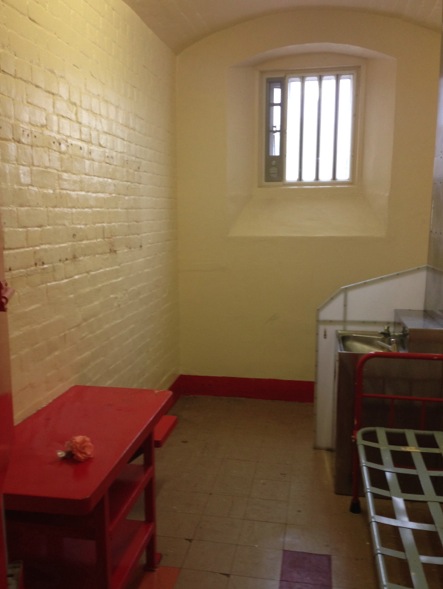
Then there’s the last thing, the thing that dare not speak its truths: the hanging gardens. In almost every jail in Britain will be the gory legacy of capital punishment. A colleague David Graham Scott, produced a dark documentary short, Hanging With Frank, featuring Frank McKue — one of the last executioners in the UK — who takes us on a tour of the execution chamber, and secret burial places at Barlinnie Prison, Glasgow, in 1995 just before the whole thing was dismantled. It would be very similar to the type of thing which occurred at Reading, and certainly while Oscar Wilde was resident. Even the bodies of executed prisoners were not allowed to be returned to their families for burial. Property of the Royal state.
One of the ArtAngel guides pointed out the areas likely to be the walking grounds of spirits past. The strangest part, to me, is these usually seem to be the most well-groomed areas in a jail. Albeit I’ve never seen a bird flying near them. While there are some resources on the history of Reading executions, it seems Her Majesty’s government is still timid about facing the past, just like it’s still timid about issuing a complete apology to Wilde, Alan Turing and others who were imprisoned, and even tortured for being queer — which was part of Nan Goldin’s creative exhibit, featuring an interview 93 year old man convicted of the same ‘gross indecency’ as Wilde who is still campaigning for vindication.
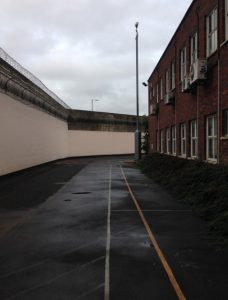

Point of redemption: the victory of the books. The layers of entendre within this journey were not lost on me. Only recently, Her Majesty’s government attempted to ban books in prisons. It didn’t work. So, a cell of an unjustifiably infamous homosexual and justifiably famous writer, displaying the books he was allowed to read as a window on the outside world was particularly tasty to me.
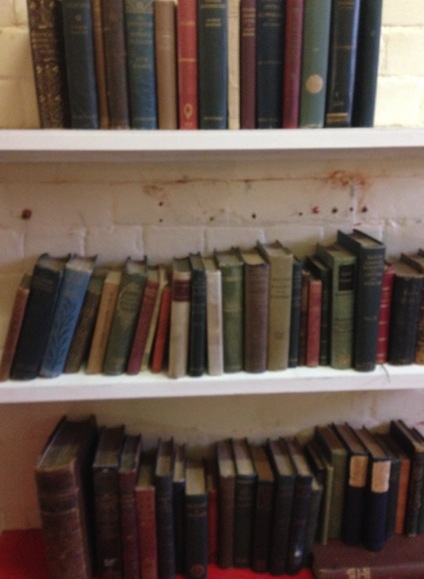
What I found fantastic about this well informed-yet-renegade exhibition and use of space was how tactile it was allowed to be. Pieces and parts, signs and significant bits of the jail remain in tact. The odor of damp which permeates most public buildings has not been eradicated. The scrapes and scratches, and remnants of posters and blue tack a public craves to investigate invites the curious to observe at will.
While we learned the facility has an uncertain future, it does enjoy Grade II listed status. However, the word down the corridors was fearful that it may be quickly offloaded to the cult of luxury developers, or relegated to the committees for further study.
Personally, I’d rather they raise the place to the ground before allowing some wealthy Philistine who couldn’t recite one line of Oscar Wilde’s work, to rent C.3.3.3, or any other room, for some perverted sense of privilege.
See this exhibition now, while the prison doors are open.
-MLB London 11 September 2016
Thanks to my dear friend Jay Blotcher, for hipping me to this!
all images ©Martin Belk

